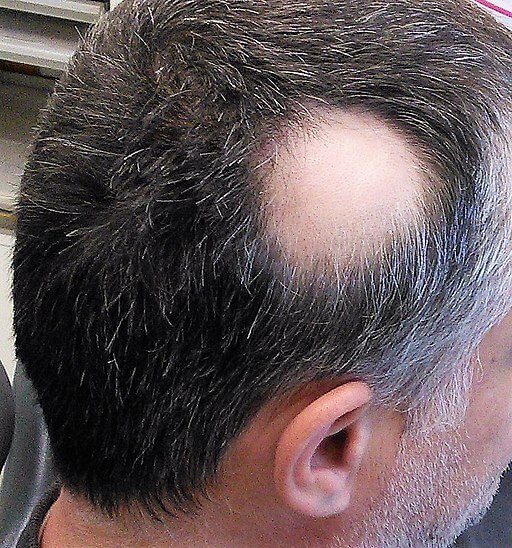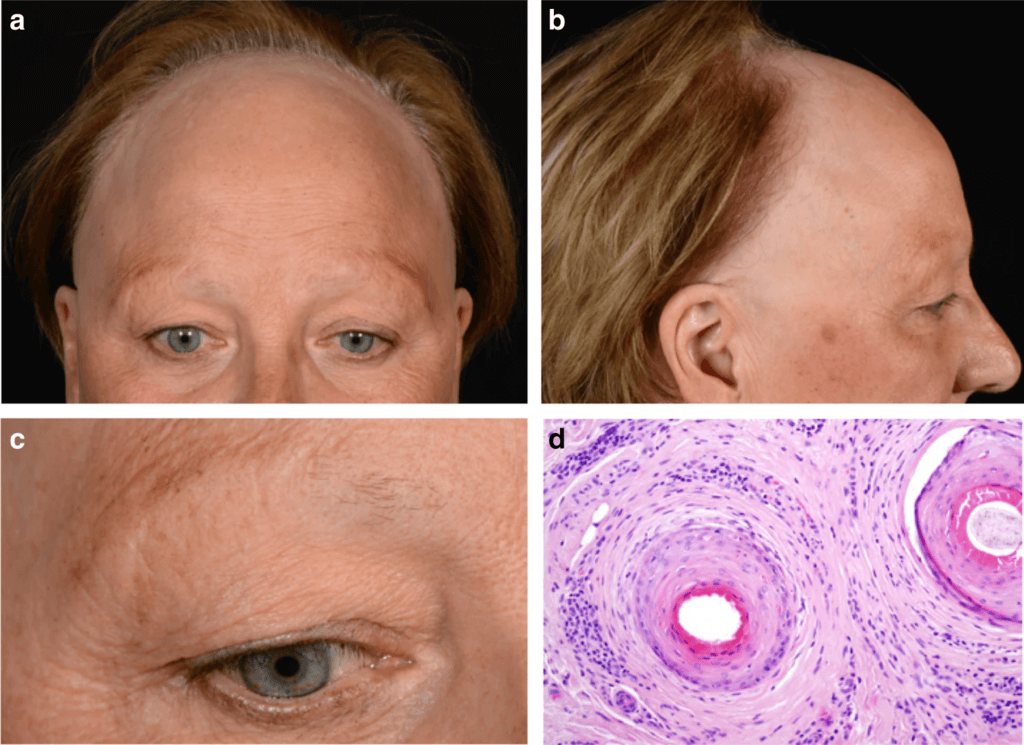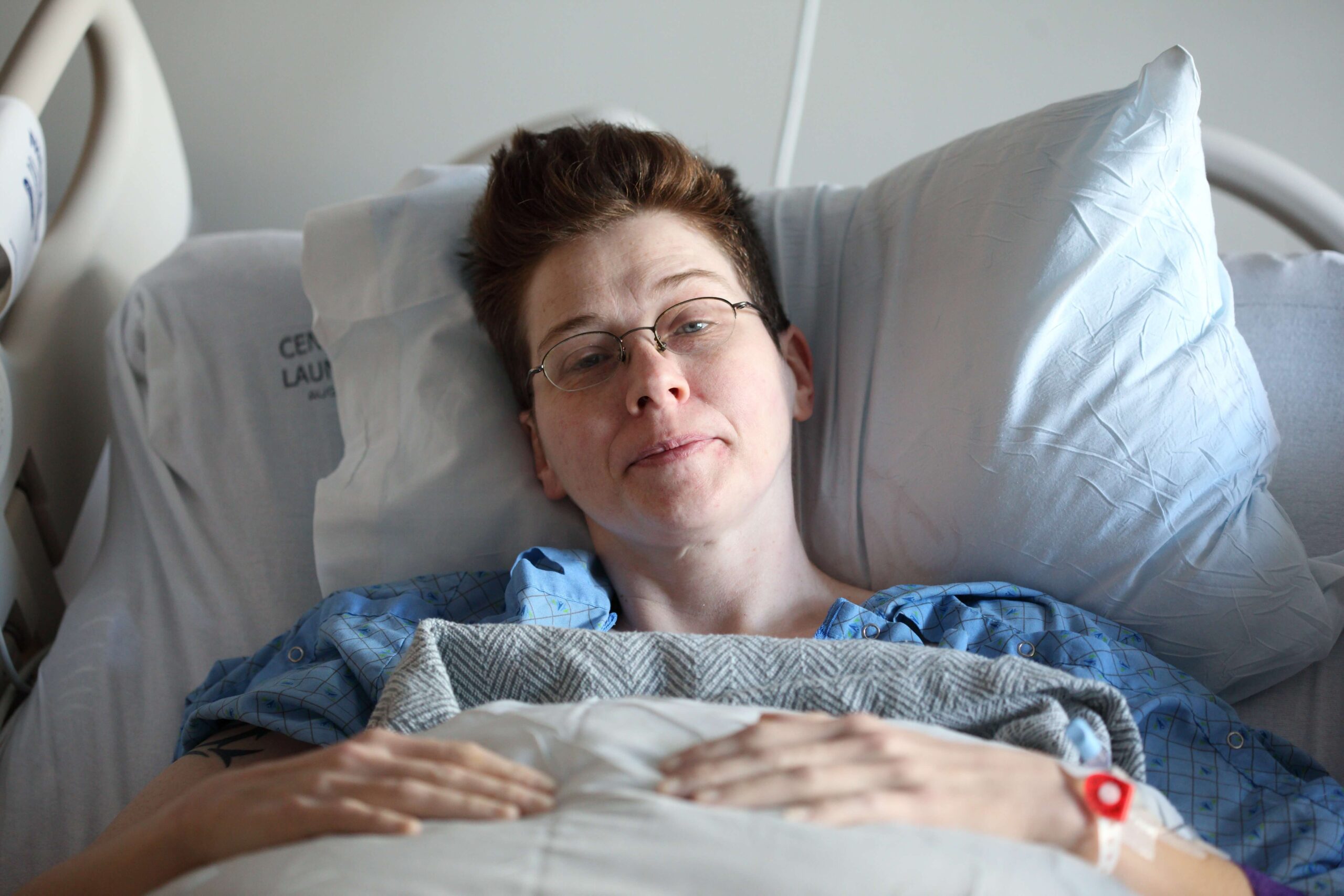4 Surprising Medical Reasons for Hair Loss That Are Often Overlooked
Are you aware of the 4 top medical reasons for hair loss that are often overlooked? This article will go over several conditions which can cause hair loss so that you will be better educated to discuss treatment options with your doctor or dermatologist.
The human scalp normally has about 100,000 to 150,000 hairs. Each day you normally lose about 50 to 150 hairs from your scalp. When you begin to lose more than this, then you may be experiencing alopecia, which is a fancy word for hair loss.
I personally struggle with hair loss and my doctor told me I was not eligible for a hair transplant because he misdiagnosed me with Alopecia Areata and Frontal Fibrosing Alopecia (both are discussed below). I also got an unnecessary scalp biopsy due to the misdiagnosis.
But after researching the medical causes for hair loss and discussing my condition further with my dermatologist, I found out I simply have normal male pattern hair loss. My goal is to save you all the headache I had to go through.
Losing hair whether you are a male or female can be very frustrating, and if you are like most people, you are researching all the causes of hair loss so that you can find the best treatment to regrow your hair.
You are going to learn all about medical reasons for hair loss and thinning as well as non medical reasons for hair loss that you should know about.
After learning about what are some medical reasons for hair loss, you will be better educated to discuss hair loss treatment options with your doctor or dermatologist.
This post is all about the 4 surprising medical reasons for hair loss that are often overlooked.
What Are Some Medical Reasons for Hair Loss?
1. Non-Scarring Hair Loss
Non-scarring hair loss conditions are the most common. Fortunately, these medical reasons for hair loss and breakage do NOT lead to permanent hair loss. With hair loss treatment, your hair can possibly grow back.
Here is a list of the most common nonscarring medical reasons for hair loss.
Female/Male Pattern Hair Loss (androgenetic alopecia)
The most common cause of hair loss in males and females is called Androgenetic Alopecia. A hormone related to testosterone blocks hair growth on the scalp. This condition usually occurs as you get older, especially if you have a family member with hair loss.
Men will tend to lose more hair on the front flanks as well as on the crown of the head.
Women will tend to lose more hair on the top of their head.
Below is a good video of how hair loss due to androgenetic alopecia looks different between men and women.
To learn about what hair loss treatment to use for female pattern hair loss, click on the article: How To Treat Hair Loss in Women.
To learn about what hair loss treatment to use for male pattern hair loss, click on the article: How to Treat Hair Loss in Men.
Alopecia Areata
Alopecia Areata is also a common cause of hair loss due to an immune disorder. The hair loss occurs in patches or sometimes on the back of the head (see picture below).
Notice there is a patchy bald area that is completely smooth without inflammation. Fortunately, alopecia areata is treatable so hair regrowth is possible.
My doctor mistakenly thought that I possibly had alopecia areata. This is why it is important to know what are some medical reasons for hair loss so that you do not blindly accept your doctor’s diagnosis.
Telogen effluvium
Telogen effluvium is hair loss due to stress. Below are examples of stressful events that can cause hair loss:
- Major surgery
- Major illness
- Pregnancy
- Medications like chemotherapy
- Extreme changes in diet/weight loss
- Vitamin deficiency (such as iron)
- Thyroid disorders
The hair loss is delayed and usually occurs two to three months after the triggering stressful event. Fortunately, this hair loss is usually not permanent.
Traction alopecia
Traction alopecia is hair loss due to tight ponytails and braids. The hair loss usually occurs on the front part of your scalp or on the sides.
Do not wear tight ponytails as in the image below if you or your family members are prone to hair loss.
Other types of nonscarring hair loss that are not as common are listed below:
- Alopecia syphilitica
- Anagen effluvium
- Loose anagen syndrome
- Pressure-induced (postoperative) alopecia
- Temporal triangular alopecia
- Trichotillomania
2. Structural damage from hair styling products and tools
The following hair styling products and tools may be non medical reasons for hair loss:
- Hair chemical treatments
- Excessive heat (blow dryers, flat irons)
- Too much brushing of the hair
Check out this video from Dr Oz of how excessive heat and chemical treatments can damage your hair.
3. Scarring Hair Loss (Cicatricial Alopecia)
The medical term for hair loss due to a scarring condition is cicatricial alopecia, which occurs in about 7% of patients who see a specialist for hair loss. These conditions are inflammatory disorders of the scalp that can lead to permanent hair loss.
Although cicatricial or scarring alopecia is not very common, it is helpful to know about these conditions since they can cause permanent hair loss. My doctor misdiagnosed me with one of these conditions (see Frontal Fibrosing Alopecia below).
Your doctor or dermatologist can tell you whether your medical reasons for severe hair loss are due to a scarring condition. Tell your doctor if you have any of the symptoms below on your scalp:
- Redness
- Itchiness
- Small raised bumps
- Pain
- Rash-like appearance
Some of medical names for hair loss due to a cicatricial or scarring condition are listed:
- Frontal Fibrosing Alopecia
- Discoid lupus erythematosus
- Lichen planopilaris
- Alopecia mucinosa
- Central centrifugal cicatricial alopecia
- Keratosis follicularis spinulosa decalvans
- Pseudopelade of Brocq
- Dissecting cellulitis of the scalp
- Folliculitis decalvans
- Acne keloidalis nuchae
- Acne necrotica
- Erosive pustular dermatosis of the scalp
Since these conditions are not the most common medical reasons for hair loss and thinning, we shall only review Frontal Fibrosing Alopecia.
Frontal Fibrosing Alopecia
Frontal Fibrosing Alopecia is a type of scarring hair loss. One non-dermatologist doctor mistakenly thought I had frontal fibrosing alopecia. Below is an example of someone with this condition:
Here are some interesting facts about frontal fibrosing alopecia:
- It usually occurs in postmenopausal women.
- It has a band-like appearance since most of the hair loss occurs in the frontal part of the scalp where one would wear a headband.
- Since 50 to 83% of patients with this condition lose eyebrow hair, it is one of the medical reasons for eyebrow hair loss.
My dermatologist did not think I had this condition, however, especially since I neither lost eyebrow hair nor had a band-like hair loss (nor am I a postmenopausal female).
4. Genetic Conditions
Can hair loss be a sign of something serious in children? Yes.
There are many rare genetic condition that can lead to hair loss in children. If your child has short brittle hair, talk to your doctor who can determine if the child has a rare inherited disorder.
When is a scalp biopsy necessary?
A scalp biopsy is necessary if your dermatologist cannot determine what is the cause of your hair loss, especially if you have tried and failed several hair loss treatments.
If you have typical male or female pattern baldness (androgenetic alopecia), you do not need a biopsy.
Before you get a scalp biopsy, please be sure to first consult a dermatologist who specializes in hair loss. Again, see a dermatologist who specializes in hair loss and has performed thousands of scalp biopsies during their career. Otherwise, you will waste your time getting this inconvenient procedure.
However, we do NOT routinely recommend getting a scalp biopsy because it can leave a scar and take about 4 to 8 weeks to heal. See the video below:
Is a Scalp Biopsy Painful?
No, a scalp biopsy is not painful because your doctor will first numb the scalp area before cutting out a small piece of your skin.
However, your scalp may BLEED A LOT. This is normal, but before you get a scalp biopsy, only consult a dermatologist who specializes in hair loss. Ask your dermatologist how many scalp biopsies your they have performed in their career.
The dermatologist will use a cauterizing device, which uses heat to stop the bleeding. If your scalp continues to bleed, then your dermatologist will use stitches.
My Scalp Biopsy Story
My dermatologist recommended a scalp biopsy because my scalp looked like it was only losing hair on the left front of the scalp, which is abnormal in male pattern hair loss. Since the right front of the scalp looked normal by the way I combed my hair, she did not bother to check the right side.
Had she check that both sides were balding, then she would have realized that I had normal male pattern hair loss, which does not require a biopsy.
Although my doctor was a dermatologist, she did not specialize in hair loss. It is imperative that you consult with a dermatologist that exclusively specializes in hair loss and has treated thousands of hair loss patients. Otherwise, they will perform a scalp biopsy on you without good reason.
My dermatologist performed a scalp biopsy on me that would not stop bleeding. The heated cauterizing gun did not stop the bleeding so she had to call an assistant to help her stitch up the wound.
It took over a month to heal and it left a scar. I had to wear a hat the whole time while it was healing.
Unfortunately, the results of the biopsy were “inconclusive.”
This post was all about the medical reasons for hair loss so that you can discuss the best treatment options with your doctor.
Other Posts You May Like:






